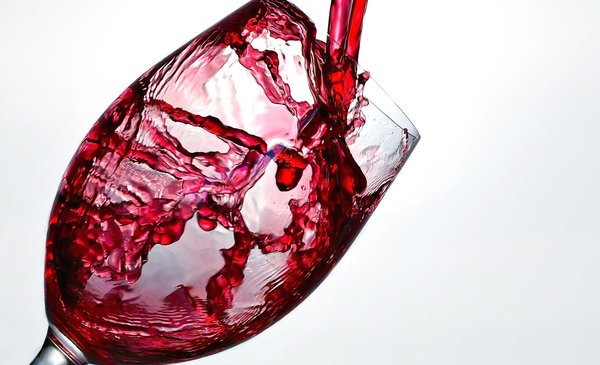Pascual Harriaguea French Basque considered the father of the value that the Tannat grape and wine from Uruguay have todaywas born on April 14 (in 1819) and for this reason Every April 14, since 2016, “Tannat Day” is commemorated in the country.
It is a day in which tribute is paid to the flagship strain in the national viticulture.
He National Institute of Viticulture (Inavi) chose this date as a tribute to Harriague, who emigrated to try his luck in these lands and left as a legacy a crop that over the decades gave identity to the viticulture of the country.
Pascual Harriague.
The Ministry of Tourism highlighted in a recent work that Uruguay “found its identity as a wine-producing country in this grape” and that the purpose of the commemoration “is what is known about this strain” and promote its consumption in the country and in the rest of the world, in a “moderate and responsible” way.
In the aforementioned work, it was indicated that in 1874 the Harriague vineyard had 200 hectares and its cellars housed a wine then called “Harriague” in his honor.
Thus, was that “A great wine was born, red, deep and corpulent, which was imposed first among the Uruguayans and then in the world”it was pointed out from that Secretary of State.
It was also stressed that Tannat “is tailor-made for Uruguayan meat” and that “the youngest vines present the most vivid colours, with marked violet and purple nuances and frank and fruity aromas”.
“As the aging time progresses, the tannins soften and the smells become more subtle and complex” and “It is always a unique and unmistakable wine”It indicated.
Tannat wines from Uruguay have obtained hundreds of medals in international competitions and have been exported to more than 50 destinations.
Finally, the ministry greeted the Inavi on this day, the grape producers and winemakers who “contribute daily to the strengthening of wine tourism in Uruguay.”

John Samuelle
Vineyards, in Canelones.

John Samuelle
The 2023 vintage with fewer grapes and high quality, due to the drought.
Tannat in the harvest 2023
Eduardo Félix, an agronomist and who works in Inavi’s technical advisory, recently summarizing the characteristics and results of the 2023 harvest, commented to The Observer that the area of vineyards with the Tannat variety is 1,575 hectares, being the majority presence in a global area of 5,848 hectares, with just over 25%.
The podium is completed by two varieties aimed at making table wine: Hamburg Muscatel for wine with 1,062 hectares and Uniblanc with 606 hectares.
In kilos of grapes, of the 68.5 million that the 2023 vintage provided, Tannat accounts for 19.5 million.

John Samuelle
Grapes for winemaking.

John Samuelle
The presence of Tannat in Uruguayan wineries is very important.
The Tannat tab
- Origin: Madiran, southwestern France.
- Characteristics: Notes of red fruits and spices, harmonious, sophisticated and elegant, powerful and balanced wines.
- Hectares with Tannat in Uruguay: 1,572,200, 27% of the total.
- Plants across the country: more than 5,000,000.
- wines: In the 2022 harvest, 29,486,210 kilos of Tannat grapes were milled, which is equivalent to 22,114,658 liters of wine.
- Destinations: Uruguayan Tannat is exported to 47 markets.

John Samuelle
Barrels in the Canelones cellar.
World’s leading producer
From the national wine institute it was indicated to The Observer that With more than 1,570 hectares, Uruguay is the main producer of Tannat in the world.
With 5,848 total cultivated hectares, 866 producers and 164 wineries, Uruguay has found its identity as a wine producing country in Tannat.
The ability to adapt to our soils, added to the Atlantic breeze, offer exceptional conditions for this variety, it was explained.
Originally from the Madiran and Irouleguy areas, in southwestern France, the Tannat variety entered Uruguay in the last quarter of the 19th century, when some immigrants began to cultivate it in the country.
It was Harriague who gave him his big push: This businessman arrived in Uruguay in 1840 and, after various livestock activities, settled in the city of Salto. Around 1870, and after a few years of trials with different varieties, he found in the Tannat grapes the conditions to make a great red wine, which he presented in 1887 and which received international praise and awards at the world exhibitions in Barcelona and Paris in 1888. and 1889.
Uruguay today reaches production volumes that even exceed those of its place of origin.
In the 2022 harvest, 29,486,210 kilograms of Tannat were milled, which is equivalent to 22,114,658 liters of wine.
This variety owes its name to the characteristic dark color of its wines, since that is what it means in Béarnais dialect, precisely from the south of France.

piqsels
Red wines.
Taking Tannar is good
It is also the strain with the most health benefits due to its high concentration of polyphenolschemicals known for their antioxidant propertieswith great health benefits.
It also has 2.7 times more resveratrol than other wines. It is a compound that occurs naturally and, in addition to its antioxidant properties, its benefits for the prevention of Alzheimer’s, stimulation of the immune system and the prevention of coronary diseasesamong others.

piqsels
Red wines.
Only one in the world
The Uruguayan Tannat is considered unique in the world due to the conjunction of its particular characteristics of soil, climate and viticulture practices. This means that the wine made from Tannat has different characteristics from other producing regions of that variety.
In these lands, Tannat is cultivated mainly in the southern region of the country, where the climatic conditions are ideal for its development.
Thanks to its adaptability to the Uruguayan soil and climate, today it is also cultivated on the coast, in the north and east of the country.
Many of the plantations are located a few kilometers from the sea, receiving the Atlantic breeze throughout the year. This generates particularities in the body and the sensory profile of the wine.
This Atlantic climate, with rainfall similar to Bordeaux, and therefore the presence of cloudiness, makes the ripening of the grapes slower while maintaining the natural acidity, and without potentially high alcohol content.
Tannat, naturally, is a variety that tends to accumulate sugars in the pulp, so this variety in desert climates produces wines with high alcohol (greater than 15°), which goes against the general trend of consuming wines with low graduation. In this way, a balanced maturation of the skin, pulp and seed is achieved, wines with elegant tannins, marked acidity and adequate alcohol.
Regarding the aging time, In Uruguay we can find Tannat aged for six months in barrels, which have the potential for aging from three to seven years, as well as others for 18 months in barrels with the potential for aging for up to 15 years or more..
Regarding the export of Uruguayan Tannat, the wines with aging potential that are most exported are those that range from three to 10 years.
The most outstanding characteristics of Tannat wines are their notes of red fruits and spices.
They are harmonious, sophisticated, elegant and balanced wines.
However, today Uruguay has diverse wines from this variety, which adapt to all palates.
There are powerful and corpulent, younger and lighter, fruity, rosé and blends, and all without exception worship Uruguay as the country of Tannat.

John Samuelle
Red grapes.

















